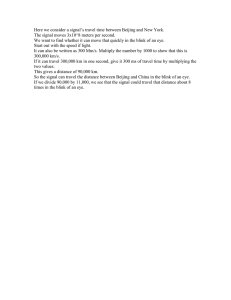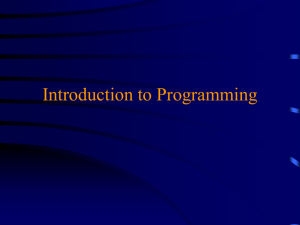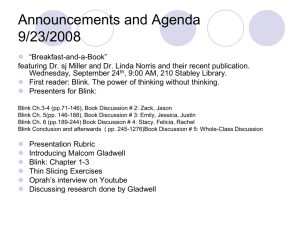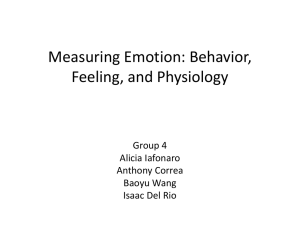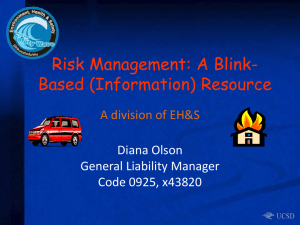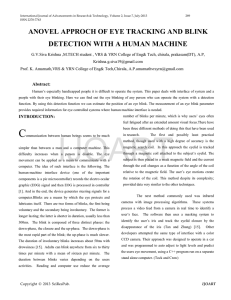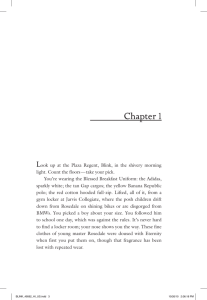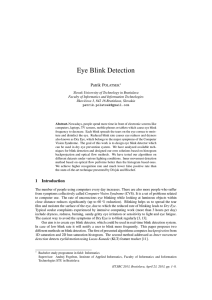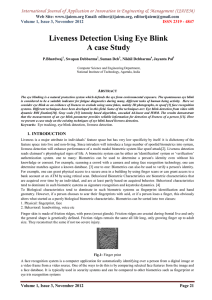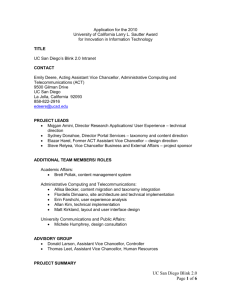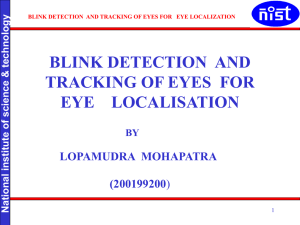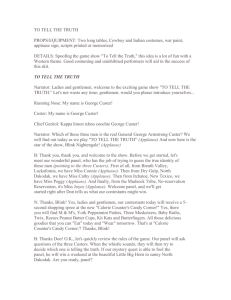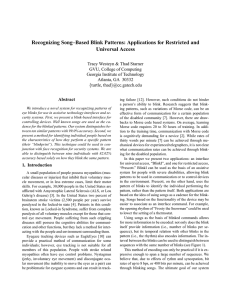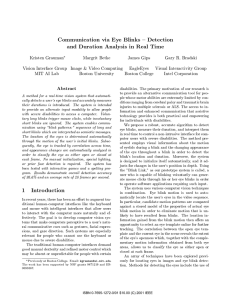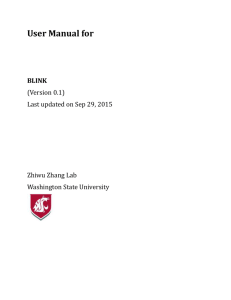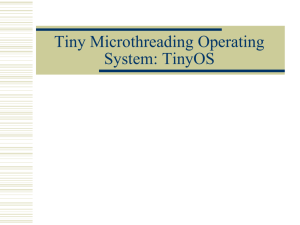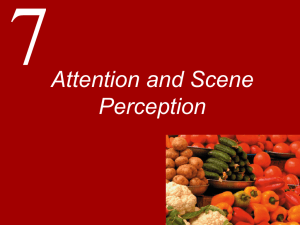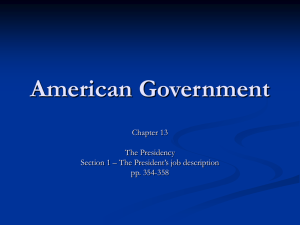Body Language & US Presidential Elections
advertisement
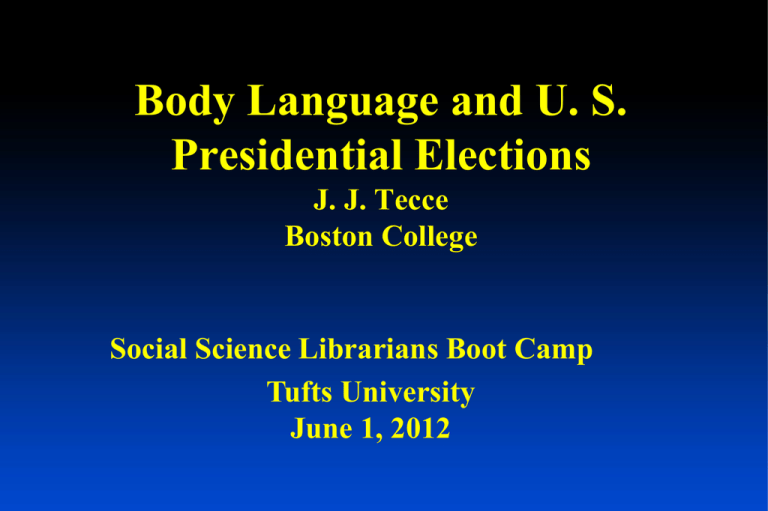
Body Language and U. S. Presidential Elections J. J. Tecce Boston College Social Science Librarians Boot Camp Tufts University June 1, 2012 tecce@bc.edu PPT Slides Elections Report Outline •I. Body Language: Unspoken Communication • A. What is body language? • B. Why do we need body language? •II. Functions of Body Language • A. Indicator of thoughts and feelings • B. Social Cue •III. Eye Movements • A. Eyeblinks • B. Gaze aversion •IV. U. S. Presidential Elections •V. Demonstration DVD •VI. Summary and Conclusions Body Language Communication without words Two Functions of Body Language Indicator Social Cue Words are not enough in communication. Words can be weak and need enrichment. Words can be misleading (lying) and need correction. BODY INDICATORS posture self-touching body movements smiles eye movements Extremes in body language are red flags. Body Language of Eye Movements A little philosophy When the eyes say one thing and the tongue another, the practiced person relies on the language of the first. Ralph Waldo Emerson 1803-1882 A little science Negative Hedonia and Increased Blink Rate Variables Examples Stress Probing interview, failure, discussion of illness, embarrassment, listening to a tragic story, noise Effort Induced muscle tension Fatigue Time on task, tryptophan Pain Electric shock Positive Hedonia and Decreased Blink Rate Variables Examples Relaxation Post-hypnosis, self-initiated thoughts, daydreaming, meditative trance Pleasure Methadone Contentment Discussion of positive feelings (towards spouse) Achievement Feeling of achievement in learning Summary of Research: Blink Rate and Hedonia Variable Blink Rate Negative Hedonia Increase Positive Hedonia Decrease Blink-Hedonia Hypothesis Eyeblink frequency is increased by unpleasant feelings and is decreased by pleasant feelings. Eye Movements Indicators of stress Eye Movements Eyeblinks Gaze avoidance Blink Rates and Stress Levels While Talking on Camera Stress Level Low Moderate High Very High Rate (bpm) 10 - 30 31 - 50 51 - 70 71 - 100 Blink Rates U.S. Presidential Election 2008 Blink Rate McCain Obama 104 62 Number of Blinks U.S. Presidential Election 2008 McCain Obama Blinks 10,037 6,244 Video 1 Barack Obama John McCain Mitt Romney U. S. Presidential Candidates 2008 Blink Rate McCain Obama Romney 140 60 16 Blink Frequency and U. S. Presidential Elections Year Faster Blinker 1960 Nixon 1980 Carter 1984 Mondale 1988 Dukakis 1992 Bush 1996 Dole 2000 Bush 2004 Kerry 2008 McCain Loser Nixon Carter Mondale Dukakis Bush Dole Gore Kerry McCain Conclusion Blink frequency is an accurate predictor of U. S. Presidential election outcomes. Social Cue Hypothesis In social situations, blinking can influence how one person views the other. Gaze Aversion Clemens Obama LIAR 18 16 (1,630) Video 2 Roger Clemens Conclusions 1. Blink frequency is increased by negative hedonic states and is decreased by positive hedonic states. 2. The blink-hedonia hypothesis best explains research findings on blinking and psychological functions. Q&A Eyeblink Rates and Levels of Stress J. J. Tecce February 5, 1996 Talking On Camera Stress Level Blink Rate* No No Low 15 - 20 Yes No Low-Moderate 21 - 30 Yes Yes Moderate-High 31 - 50 Yes Yes High 51 - 70 Yes Yes Very High 71 – 140 * Numerical values represent blinks per minute. According to the hedonia hypothesis, higher blink rates reflect negative feelings, such as those that occur during greater mental effort (as in talking) or during stress (as in talking to a large audience, being on camera, or being asked an anxiety-producing question) (Tecce, 1992, McGraw-Hill Yearbook of Science and Technology). Lying No Yes Inactive Active Body Language
